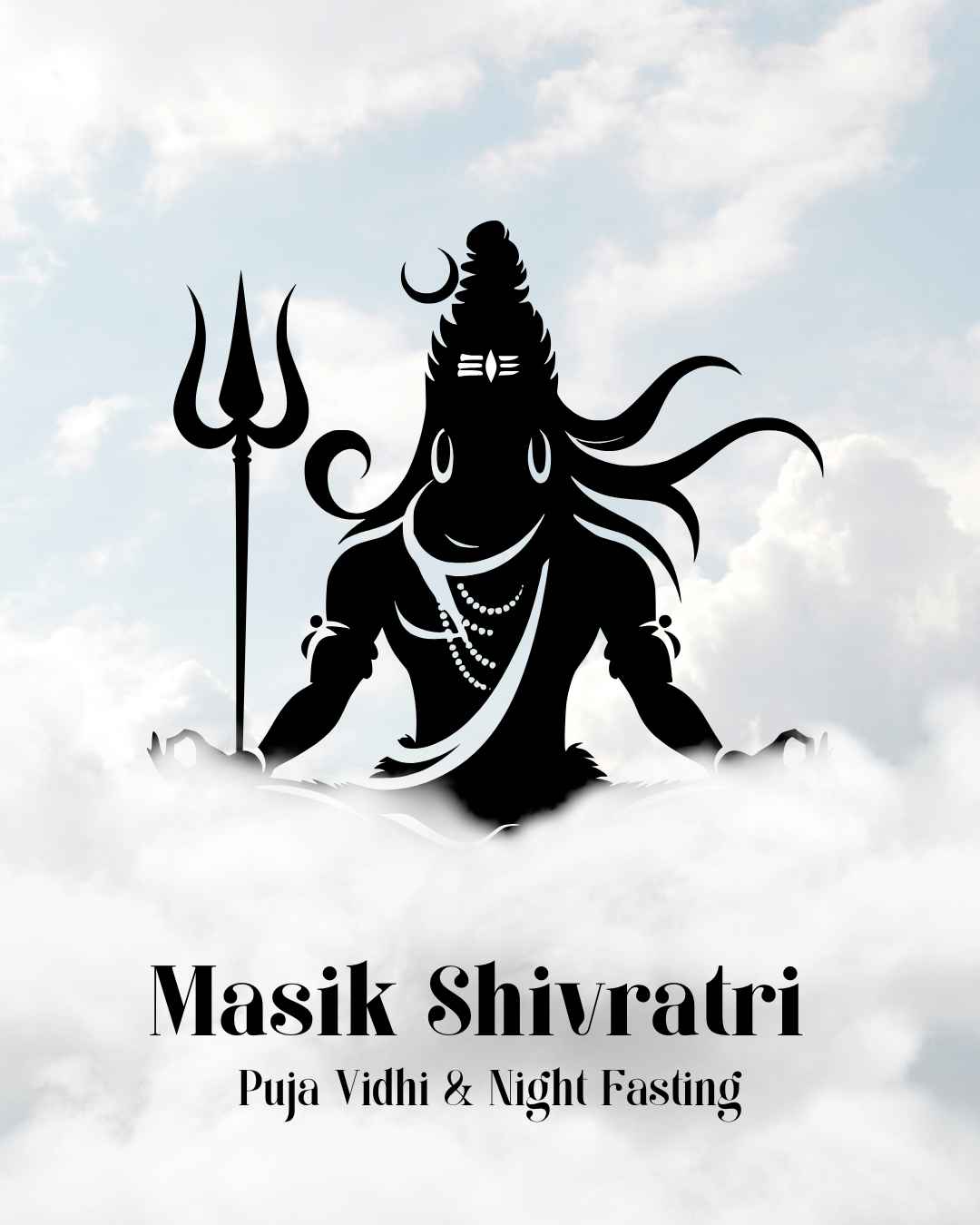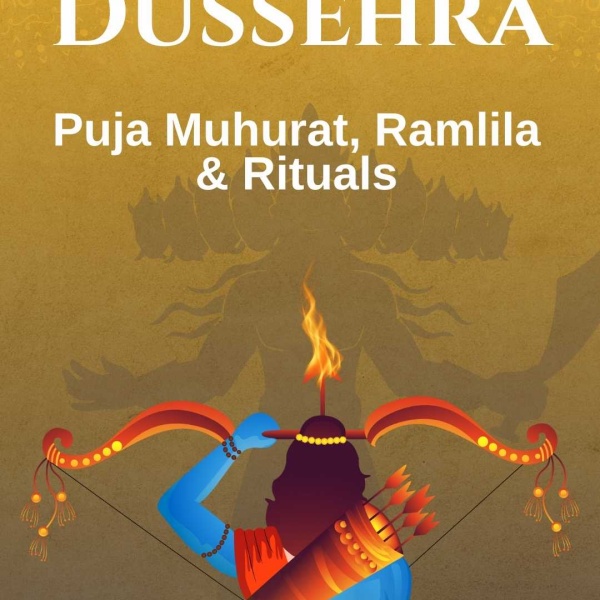Masik Shivratri holds a sacred place in the spiritual calendar of millions of Hindus. Devoted to Lord Shiva, this monthly observation offers devotees a regular opportunity to deepen their connection with the divine and seek his blessings for health, prosperity, and inner peace. The Masik Shivratri in October 2025 falls on 19th October (Sunday), marking a divine occasion to observe fasts, perform sacred rituals, and engage in night-long worship.
Also read- Festival in October 2025: Complete List of Hindu Festivals
What is Masik Shivratri?
Masik Shivratri literally means the “monthly night of Shiva.” Unlike Maha Shivratri, which occurs once a year, Masik Shivratri is observed every month on the 14th day (Chaturdashi) of Krishna Paksha (waning moon phase). Devotees believe that on this night, Lord Shiva’s cosmic energy is exceptionally accessible, making it the ideal time for worship, meditative practices, and the performance of rituals.
The day symbolizes the sacred union of Lord Shiva with Goddess Shakti, representing the balance of consciousness and energy in the universe. By observing Masik Shivratri, devotees seek to overcome obstacles, purify their mind and body, and advance on their spiritual journey.
Importance in Hinduism
- It is believed that the first appearance of Lord Shiva in the form of Shiva Linga took place on a Shivratri night. Worshiping Shiva on this day brings spiritual merit and blessings.
- Devotees observe fasting and night-long vigil (Jagran) to rid themselves of past sins and negative karma.
- Masik Shivratri is especially auspicious for unmarried women praying for a virtuous life partner and for married couples seeking harmony and prosperity in married life.
Masik Shivratri October 2025 Date & Timings
In 2025, Masik Shivratri (Kartik month) will be observed on:
- Date: Sunday, 19th October 2025
- Shivratri Tithi Starts: 1:51 PM on October 19
- Shivratri Tithi Ends: 3:44 PM on October 20
The key time for performing Puja and observing fasts is the night of Shivratri beginning after sunset and continuing till early morning, with special importance given to midnight, when Shiva is believed to show his divine cosmic form.
The Spiritual Significance of Masik Shivratri
Masik Shivratri offers a monthly opportunity to reconnect with Lord Shiva, the embodiment of destruction and regeneration in Hinduism. The night embodies several spiritual lessons:
- Control of Senses and Mind: Observance of the fast and rituals helps in mastering desires and negative emotions like anger, jealousy, and pride.
- Purification of Soul: It cleanses past karmas and purifies the devotee’s path toward moksha (liberation).
- Fulfillment of Desires: Devotees, especially women, pray for fulfilled desires relating to family and personal life.
- Harmony in Relationships: Married women seek blessings for marital harmony and family peace.
The energy on this night is said to assist devotees in transcending worldly attachments and fostering humility and detachment, key attributes in spiritual progression.
Link with Pradosh Vrat and Navratri
Connection with Pradosh Vrat
Pradosh Vrat is dedicated to Lord Shiva and observed twice in a lunar month during the twilight period on the 13th day of both the waxing and waning moon phases. Both Pradosh Vrat and Masik Shivratri focus on Shiva’s blessings, but while Pradosh Vrat emphasizes evening prayers and is believed to remove evil and illnesses, Masik Shivratri centers on night-long worship and spiritual purification.
Together, they offer devotees complementary opportunities to seek Shiva’s grace:
- Pradosh Vrat helps maintain physical and emotional health with fasting and evening puja.
- Masik Shivratri purifies the soul through intense night vigils and meditation.
Connection with Navratri
Masik Shivratri often coincides with the auspicious Navratri period, which celebrates Goddess Durga’s divine power. While Navratri is revered as Devi Paksha — the fortnight dedicated to the Divine Mother — Masik Shivratri is dedicated to Lord Shiva, the divine consort of Goddess Parvati (Durga).
- Observing Masik Shivratri during Navratri balances Shiva-Shakti energies, symbolizing cosmic harmony.
- Together, these festivals emphasize the union of divine masculine and feminine forces, essential for creation and destruction in the universe.
- Participating in both also deepens spiritual growth by acknowledging different facets of divinity.
Preparing for Masik Shivratri Puja: Essential Items
Before the night of worship arrives, devotees prepare for an elaborate puja by gathering the following items and ensuring a clean, serene environment:
- Shiva Linga or Murti of Lord Shiva
- Bael leaves (Bilva patra): Considered highly sacred and essential for Shiva puja
- Water, milk, honey, ghee, sugar: For Abhishekam (ritual bathing of the Shiva Linga)
- Fruits and flowers: Fresh offerings symbolizing devotion
- Incense sticks and oil lamps (diyas)
- Sandalwood paste and vermilion
- Rice grains and black sesame seeds
- Bilva mala or Rudraksha beads: For chanting and meditation
- Bhajans, Shiva mantras printouts or a devotional audio playlist
- Clean clothes and prayer mat
Read about – Valmiki Jayanti 2025: Life & Teachings of Maharishi Valmiki
Read about – Kojagari Lakshmi Puja 2025: Overnight Vigil & Wealth Rituals
Step-by-Step Puja Vidhi for Masik Shivratri October 2025
Performing the Shivratri puja with devotion helps channel divine energy and attain spiritual growth. Below is a traditional Puja Vidhi guide for Masik Shivratri night:
1. Early Evening Preparation
- Take a bath and wear fresh, clean clothes, preferably white or saffron.
- Set up the altar with the Shiva Linga or idol, decorating it with flowers and Bilva leaves.
- Light the oil lamp and incense sticks to purify the environment.
2. Invocation (Dhyana and Sankalp)
- Sit calmly and meditate on Lord Shiva’s divine form.
- Take Sankalp (resolve) stating your intention to perform the Masik Shivratri vrat and puja with devotion.
3. Abhishekam (Sacred Bathing of Shiva Linga)
- Gently pour water over the Shiva Linga while reciting the Maha Mrityunjaya Mantra or Om Namah Shivaya.
- Follow by pouring milk, honey, ghee, sugar, and water mixed with sandalwood paste in a clockwise manner.
- Offer Bilva leaves, flowers, rice, and fruits with deep reverence.
4. Chanting and Meditation
- Recite or listen to Shiva mantras such as Om Namah Shivaya, Rudram Chamakam, or Shiva Stotra.
- Use Rudraksha malas to keep count and focus your mind.
- Meditate on Shiva’s cosmic dance and his benevolent nature.
5. Offering Naivedyam
- Offer prepared fruits, sweets, and cooked food as Naivedyam to Lord Shiva.
- Light camphor to conclude the offering.
6. Night Vigil (Jagran)
- Remain awake throughout the night in worship and prayer.
- Sing bhajans and spiritual songs, read Shiva scriptures, or practice silent meditation.
- Avoid sleep as it is believed that staying awake pleases Lord Shiva.
7. Concluding the Puja
- Perform Arti at dawn, offering light with a ghee lamp to the deity.
- Seek blessings from Lord Shiva through prayer.
- Distribute prasad to family members and guests.
Fasting Rules on Masik Shivratri
Fasting is an integral part of Masik Shivratri observance. It purifies the body and mind in preparation for worship.
Types of Fast
- Complete Fast: Abstaining from all food and water till next morning’s puja after sunrise.
- Partial Fast: Consuming only fruits, milk, and water.
- Daytime Fast: Abstaining from grains or heavy meals during the day but eating light food in the evening after puja.
Who Should Fast?
- Devotees of all ages but particularly unmarried girls, married couples, and spiritual seekers.
- Those facing health problems should consult physicians before fasting.
Benefits
- Enhances spiritual discipline and control over senses.
- Promotes physical detoxification.
- Brings clarity of mind for uninterrupted worship and meditation.
Masik Shivratri Night Vigil (Jagran) Importance
The night vigil during Masik Shivratri holds great spiritual potency.
- Lord Shiva is said to manifest in his cosmic form at midnight on this day, and devotees who stay awake receive his direct blessings.
- Night-long chanting and meditation foster an atmosphere of divine energy and heightened consciousness.
- The vigil helps devotees overcome sleepiness and distractions, symbolizing victory over ignorance and illusion.
To maintain energy, devotees often consume light, sattvic foods before starting the vigil and engage in devotional music and discourse.
Special Prayers and Mantras to Chant
Some powerful mantras for Masik Shivratri worship include:
- Om Namah Shivaya — The primary and most potent mantra invoking Shiva’s grace.
- Maha Mrityunjaya Mantra:
“Om Tryambakam Yajamahe Sugandhim Pushtivardhanam |
Urvarukamiva Bandhanan Mrityor Mukshiya Maamritat ||”
(Chant for healing and liberation from death fears) - Rudram Chamakam: A sacred hymn from the Yajurveda, praising Shiva’s many energies.
- Shiva Stotra: Devotional hymns that narrate Shiva’s qualities and mythology.
Daily chanting, with focus and devotion, multiplies the spiritual benefits of Masik Shivratri.
Masik Shivratri for Women: Special Observances
Unmarried and married women observe Masik Shivratri with particular devotion:
- Unmarried Women: Pray for a good husband and harmonious married life.
- Married Women: Seek the long life and health of their husbands and family peace.
Women often perform Kumari Puja on this day—worshiping young girls as divine manifestations of the Goddess, interlinking Shiva’s power with Shakti’s nurturing energy.
Read about – Mahalaya Amavasya 2025: Pitru Tarpan & Shraddha Rituals
Read about – Skanda Sashti 2025: Murugan Puja Vidhi & Significance
Masik Shivratri Celebrations Across India
- North India: Devotees flock to Shiva temples, especially Kashi Vishwanath in Varanasi, to do special pujas and night vigils.
- South India: Temples like Brihadeeswarar in Tamil Nadu conduct elaborate rituals with music and dance performances at night.
- Maharashtra: Devotees visit famous temples like Trimbakeshwar and Ghrishneshwar, observing fasting and midnight worship.
- Uttarakhand & Himachal Pradesh: Mountainside Shiva temples see large pilgrimages during Masik Shivratri, often accompanied by fairs and religious discourse.
Tips for Observing Masik Shivratri
- Prepare mentally and physically by sleeping well the night before and bathing early.
- Keep the house clean and decorate the puja space with fresh flowers and lamps.
- Avoid negative thoughts and focus on Shiva’s qualities of compassion and tranquility.
- Share prasad and blessings with family and neighbors, spreading spiritual positivity.
- Listen to spiritual talks or Shiva-related discourses to enrich your understanding.
Conclusion
Masik Shivratri October 2025 is an auspicious occasion for devotees to honor Lord Shiva with devotion, fasting, and night-long vigil. This monthly festival allows spiritual purification, inner strength, and the fulfillment of desires, making it a vital practice for every devotee. In conjunction with festivals like Pradosh Vrat and Navratri, Masik Shivratri embodies the deep cosmic rhythms of Shiva and Shakti energies in Hindu dharma.
Partaking in the rituals of Masik Shivratri with sincerity can renew one’s spiritual journey and bring divine blessings of health, prosperity, peace, and liberation.
As Masik Shivratri 2025 approaches, prepare yourself to embrace this night with devotion, patience, and focus on the divine Shiva’s eternal grace.
Read about – Chhath Puja 2025 : Surya Arghya & Rituals



1 Comment